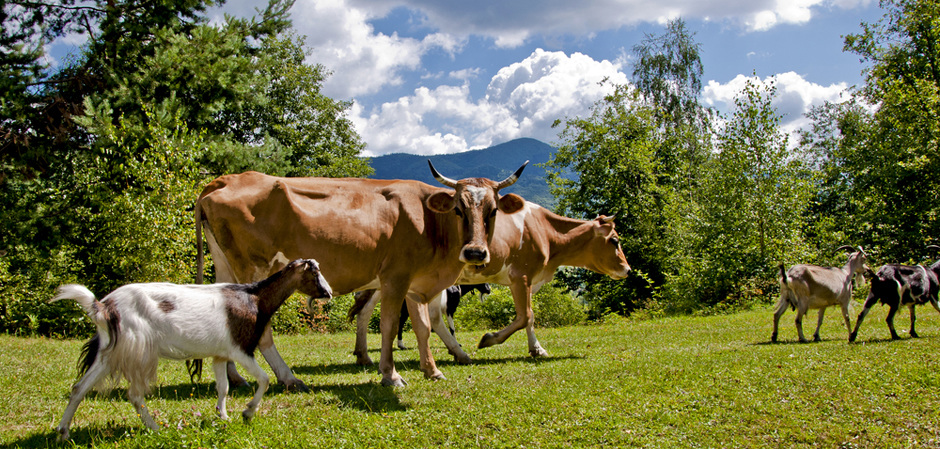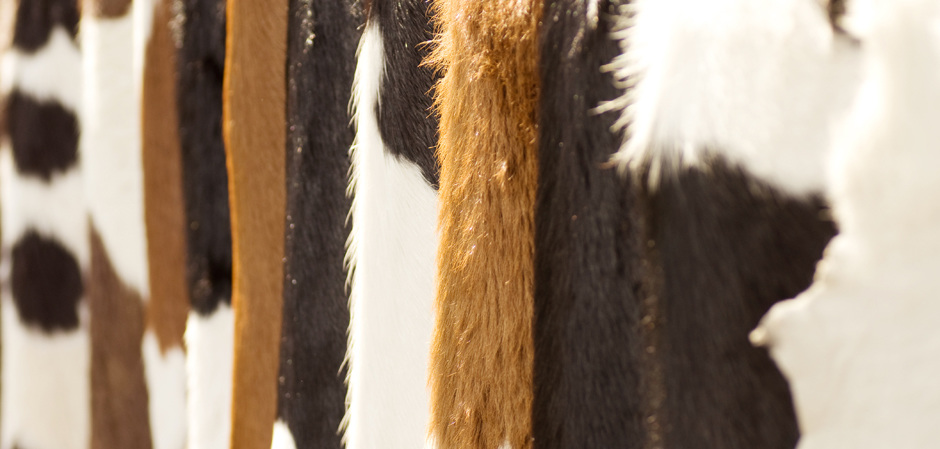Genuine leather, its types and features of application
part 1 part 2
Who doesn't try to make something out of skin these days? Designers of various directions are trying to work with her, from shoes to costume jewelry. By selling leather, we answer a variety of questions – from how to do, to how to do. With a series of articles about natural leather, we will try to answer all these questions and a little more.
In general, natural leather can be classified by types of raw materials, cutting, type of tanning and dressing, as well as by purpose. Let's consider all these classifications. Let's get acquainted with the main stages of raw material dressing, consult with the specialists of the tannery and see the whole process from the inside.
We will start our mini-lectures with the origins, with raw materials.Enlarged raw materials can be divided into the following categories:hides of cattle (cattle), hides of small cattle (cattle), horse, deer, camel skins, skins of exotic animals, reptile and fish skins, bird skins.

To begin with, let's consider the most common raw materials cattle skin. The skins of bulls and cows, buffalo and bison fall into this category.
The quality of the skin depends primarily on the breed, the quality of the animal's feeding and its habitat. Stories about European cows that are allowed to listen to classical music are not stories. Proven – milk yield increases. Well, pastures with good, specially sown grass affect the condition of the skin of animals, the amount of collagen in the dermis and, as a result, the best organoleptic properties - smoothness and elasticity. In Russia, the best raw materials come from the black earth region of Lipetsk, Bryansk region.
Very often I have to hear about "beef skin". Please note: Beef is meat! And «ready-made cattle skin» is the correct designation of processed skin ready to use!
Cattle skins are classified and sorted by weight and gender before being put into production. We will tell you about this in more detail.

Types of cattle skins:
Calf skins (fine weight raw materials). This category of skin type includes opoek skins (a dairy-fed calf) and outgrowth skins (a calf that has already switched to grass feed). These skins are distinguished by excellent elasticity and, with sufficient density, softness. Usually these skins are processed for further production of outerwear, elite shoes, orthopedic lining. In the raw classification, the slimy skin of an unborn calf is also usually mentioned. Such skins were used to produce kid-like, especially delicate skin. Gloves and expensive clothes were made from huskies. In our country, specially husky, from this type of raw material is not made. ... for industrial reasons.
Light raw cattle – this is a half-skinned (teenage bull), yalovka and bulls weighing up to 17 kilograms.
In bulls, a slight vorticity is already manifested on the skin (traces of folds in the withers). Yalovka is an undeveloped cow. Her skin is more dense, with a small cap, slightly thinner floors.Usually these skins, in finished leather, are used for the production of lining, soft, elastic nappa leather (generally accepted international name nappa) for the production of shoes. Some haberdashery articles are also produced from this type of raw material.
The raw materials of medium and heavy weight are the skins of mature cows and bulls. Bovine is the name of the skin of castrated bulls. Despite the fact that the buggies are called an uncastrated bull. This raw material is subject to doubling. That is, you can cut the bottom layer of the skin into it. It turns out 2 types of finished leather:The upper layer is the facial part of the dermis or the facial skin and the lower layer is the bakhtarian part of the dermis or the split. According to the technology of doubling (cutting) produced in semi-finished «wet-blu» or «kraste ». Further, such raw materials are sent for additional refinement of semi-finished products for their intended purpose. So they get a double area of skin from one skin.Both types of such finished leather are used for the production of footwear, haberdashery, furniture, automotive, aviation, saddlery, and yuft products.
Good quality sawdust is treated as velour (ennoble the fleecy layer on one side). The skin becomes a beautiful appearance with a velvety pile finish. Tanners call such a skin split-velour. In the people it is usually called "suede". There is a fundamental difference and the origin of this name.In tsarist times, tanners produced white sheepskin glove leather by state order for officers and called it "suede". The technology was kept secret, the skin was so soft that a whole lamb skin could be crushed and fit in the palm of your hand. The fundamental difference of these leathers is the increased elasticity of the skin in all directions, elastic and velvety to the touch. "Suede" is a leather developed according to a special technique for the production of gloves. Therefore, «split-velour » to call «suede » would be wrong and unprofessional.
To be continued.
Photo: shutterstock